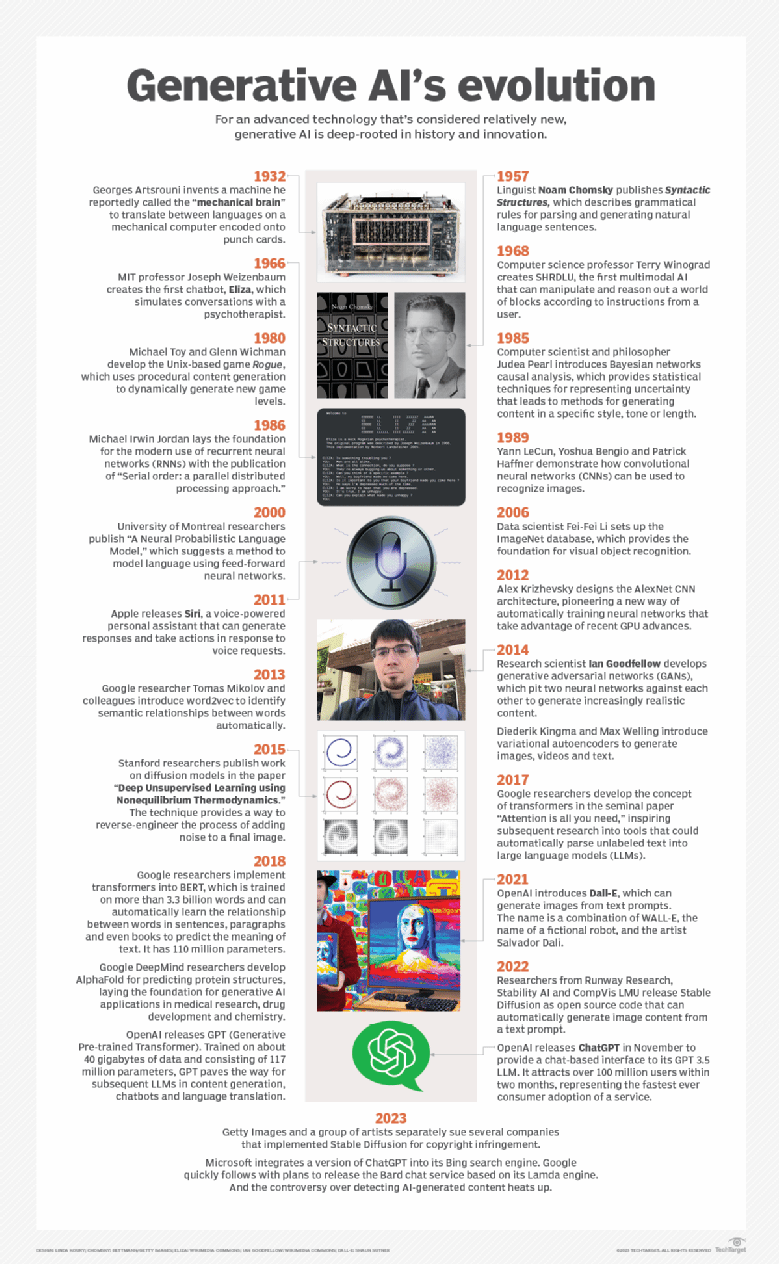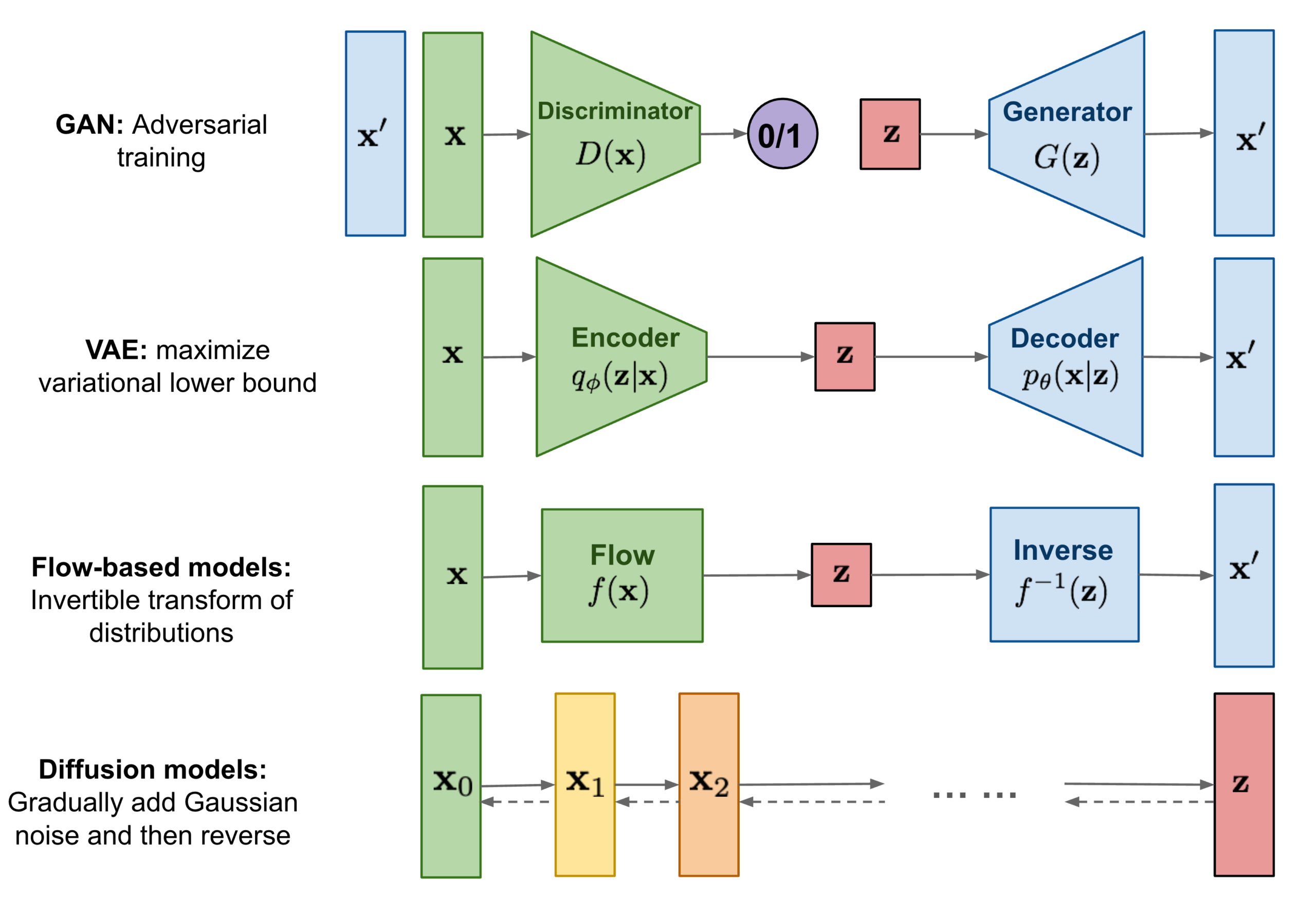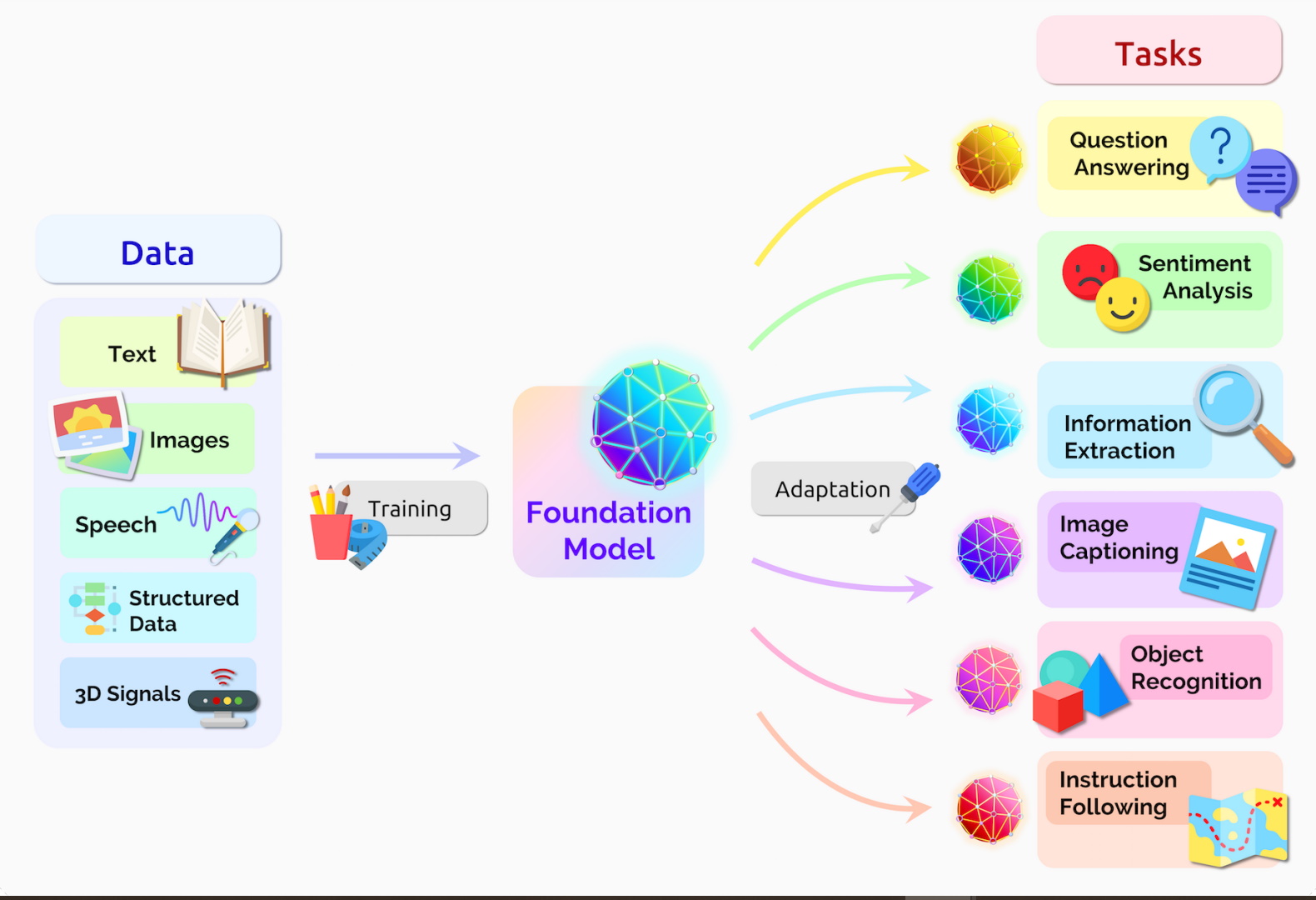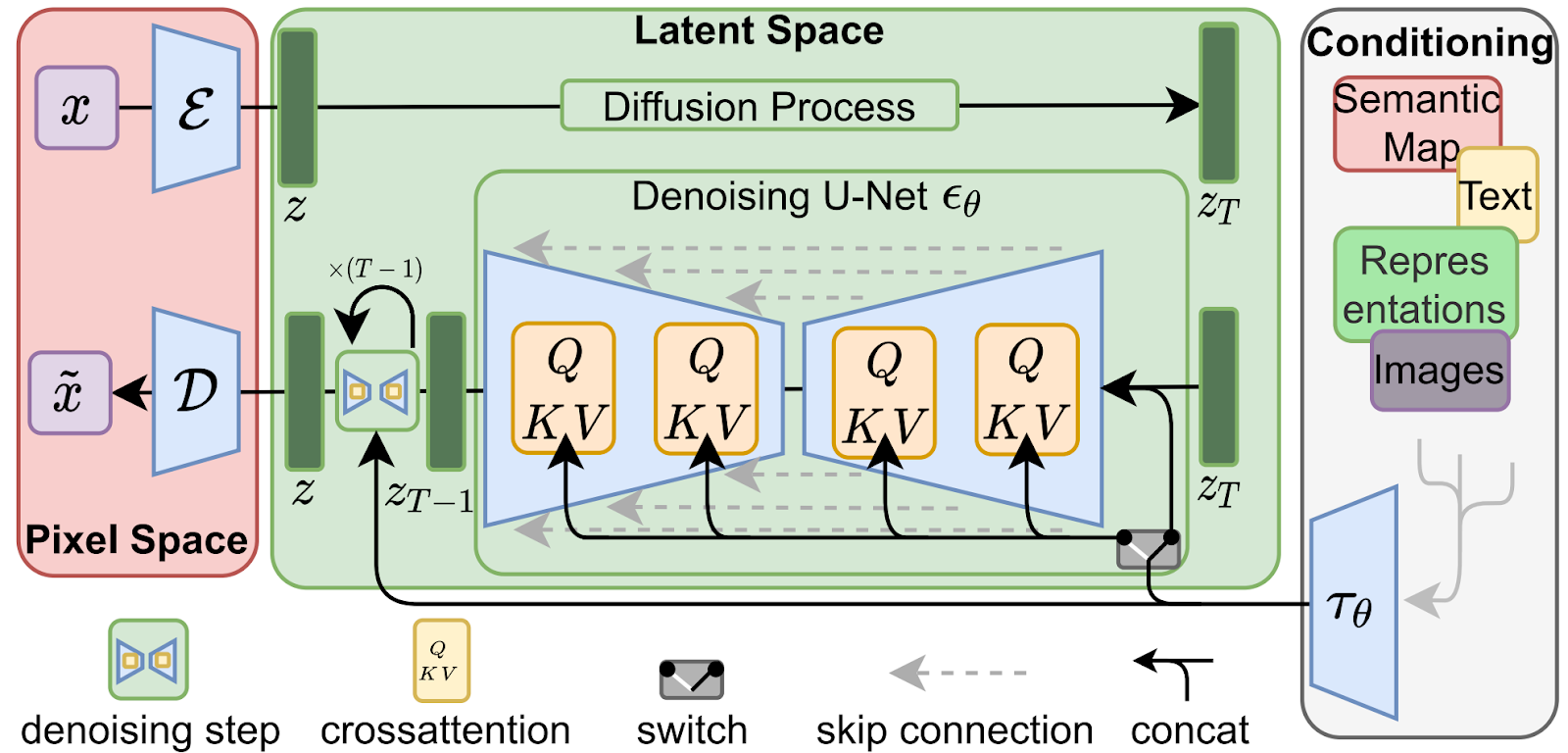Generative Ai Models
Just type a few words of prompt and you will get an answer in the text, image, audio, video, or other forms as you expected. This is something known as generative AI models and the hype of it is growing rapidly.
Gartner, a technology research firm, has included generative AI in their Emerging Technologies and Trends Impact Radar for 2022 report, recognizing it as one of the most impactful and rapidly evolving technologies that can revolutionize productivity.

Source – techtarget.com
According to Gartner’s predictions:
- By 2025, generative AI will be producing 10% of all data (now it’s less than 1%) with 20% of all test data for consumer-facing use cases.
- In addition, 50% of drug discovery and development initiatives will be using generative AI till 2025.
- And, 30% of manufacturers will use the technology to improve their product development effectiveness by 2027.
Now, you know how vital it is to adapt generative AI to remain competitive in your business domain. After all, it is all about staying updated with the rapidly changing digital landscape.
In this post, let’s get to know more about Generative AI tools that can be helpful for you in harnessing AI power in your applications.
What are Generative AI Models?
Generative artificial intelligence (AI) models are a combination of various AI algorithms used to represent and process content. These models utilize natural language processing techniques to generate text, transforming raw characters such as letters, punctuation, and words into sentences, parts of speech, entities, and actions, which are then represented as vectors using multiple encoding techniques. Images are also transformed into various visual elements, also expressed as vectors.
However, these techniques can also encode biases, racism, deception, and puffery that exist in the training data. ChatGPT Developers must be cautious of these limitations while representing data.
Once developers select the representation of data, they apply a specific neural network to generate new content in response to a query or prompt. Techniques such as Generative Adversarial Networks (GANs) and Variational Autoencoders (VAEs) are appropriate for generating realistic human faces, synthetic data for AI training, or facsimiles of particular humans.
Transformers such as Google’s Bidirectional Encoder Representations from Transformers (BERT), OpenAI’s Chat GPT, and Google AlphaFold have advanced progress in generating new content. In addition to encoding language, images, and proteins, these neural networks can also generate new content.
What is the Best Way to Evaluate Generative AI Models?
Here are the following things you should take into account while evaluating generative AI models:
- Quality: When it comes to applications that interact with users, the quality of the generated output is of utmost importance. In speech generation, for instance, if the quality of the speech is poor, it becomes challenging to understand. Similarly, in image generation, the desired outputs should be visually indistinguishable from natural images to be considered of high quality.
- Diversity: This is another crucial factor to consider. A good generative model should be able to capture the minority modes in its data distribution without sacrificing generation quality. This helps reduce any undesired biases in the learned models.
- Speed: Many interactive applications require fast generation, particularly real-time image editing, to allow for use in content creation workflows. As such, speed is a significant consideration when evaluating generative AI tools.
To get a sense of the landscape you can start with this market map from @sonyatweetybird and @sequoia
This thread will double click on many of the key players and technologies worth watching.https://t.co/fGcYvgExQW
— Contrary Research (@Contrary_Res) October 27, 2022
Types of Generative AI Models

There are various types of generative AI models, and the combination of their unique features can lead to even more powerful models. Let’s dive deeper into these models:
Diffusion Model/Foundation Model
Diffusion models, also known as denoising diffusion probabilistic models (DDPMs), are a type of generative model used in artificial intelligence and machine learning. These models determine vectors in latent space through a two-step training process, which includes forward diffusion and reverse diffusion. During the forward diffusion process, random noise is gradually added to training data. Conversely, the reverse process reverses the noise to reconstruct the data samples. Novel data can be generated by running the reverse denoising process starting from entirely random noise.
Diffusion models are considered foundation models because of their scalability, high-quality output, flexibility, and suitability for generalized use cases. However, due to the reverse sampling process, running foundation models can be a slow and lengthy process.
Also read Generative AI vs Machine Learning vs Deep Learning Differences
Application of Diffusion Model
- Decision-Making
- Reaction Time Analysis
- Perceptual Decision Making
- Financial Markets
- Medical Diagnosis

Generative Adversarial Networks
Generative adversarial networks, or GANs for short, are a type of machine learning model that uses deep learning techniques to generate new data based on patterns learned from existing data. GANs use two sub-models, a generator and a discriminator, which work together in a game-like setting to produce increasingly accurate examples of the target data.
The generator creates new examples, while the discriminator tries to distinguish between the generated and real examples. Through this iterative process, the generator learns to create examples that are increasingly similar to real data, making GANs a powerful tool for generating new content, such as images, music, and text. Using both imagery and text, such technologies can create visual and multimedia artifacts.
Source – bloomberg
Applications of GANs
- Image Synthesis
- Video Generation
- Data Augmentation
- Style Transfer
- Anomaly Detection
- Text-to-Image Synthesis
Transformer-Based Model

Transformer-based models are neural networks that excel at learning context and meaning by closely analyzing relationships in sequential data. These models, including GPT-3 and LaMDA, operate using cognitive attention and evaluate the importance of various pieces of input data. Essentially, transformers are designed to comprehend language or images and then generate texts or images using enormous datasets as their basis for learning. For example, technologies such as generative Pre-Trained (GPT) language models can use information from the Internet to create content for websites, press releases, and whitepapers.
Applications of Transformer-Based Model
- Language Translation
- Sentiment Analysis
- Chatbot and Virtual Assistant
- Questioning Answering
- Content Creation
- Detect Trends and Anomalies
Variational AutoEncoders (VAEs)

Variational AutoEncoders (VAEs) are a type of generative model, similar to Generative Adversarial Networks (GANs). VAEs consist of two neural networks, encoders, and decoders, that work together to create the most effective generative models. The encoder network learns to represent the data more efficiently, while the decoder network learns to regenerate the original dataset more efficiently.
VAEs are incredibly useful for creating complex generative models of data, especially when working with large datasets. Using a VAE, you can generate new images by sampling from the latent distribution, allowing you to create unique and original images.
By optimizing for both the efficient representation and regeneration of data, VAEs are able to create highly effective generative models. This makes them an excellent choice for anyone looking to create new and unique content using AI-generated models.
Applications of Variational AutoEncoders
- Image and Video Generation
- Anomaly Detection
- Music Generation
- Data Imputation
- Dimensionality Reduction
- Signal Processing
- Security Analytics
What Kinds of Output Can a Generative AI Model Produce?
Generative AI models can produce outputs that are virtually indistinguishable from human-generated content. However, there can be instances where they seem a little odd or uncanny. So, the results depend on the quality of the model, which has seen remarkable progress in recent years, and the appropriateness of the input.
In just ten seconds, ChatGPT can produce an essay. Have you ever wondered about the incredible capabilities of ChatGPT and the wide-ranging benefits it offers? Immerse yourself in this enlightening post titled “What is ChatGPT and Its Benefits?” and uncover the answers you seek.
The AI art model, DALL-E can generate a variety of bizarre yet stunning images, including a Raphael painting of a Madonna and a child, munching on pizza. Similarly, other generative AI models can produce code, video, audio, or business simulations.
However, the outputs are not always precise, nor are they suitable for every context. When asked to generate an image for Thanksgiving dinner, DALL-E 2 produced a picture of a turkey garnished with whole limes beside a bowl of what appeared to be guacamole. Moreover, ChatGPT struggles with basic algebraic problems and counting, as well as the inherent sexism and racism that is prevalent in society and the internet.
Generative AI outputs are the result of the data that trains the algorithms, which is usually massive in size. Since these algorithms’ training data is vast, with GPT-3 trained on a staggering 45 terabytes of text data, the models can appear to be creative when producing outputs. Furthermore, the models often contain random elements that enable them to produce multiple outputs from a single input request, which contributes to their lifelike qualities.
What Kinds of Problems Can a Generative AI Model Solve?
You may have noticed the popularity of generative AI tools, like ChatGPT, that can produce hours of entertainment. However, the potential for businesses to leverage these tools is even greater.
- Generative AI models can produce credible writing in seconds, making them a valuable tool for organizations that require clear written materials.
- Generative AI models have proven to be beneficial for IT and software companies as they are capable of producing accurate code on demand.
- Marketing departments can leverage generative AI to quickly and efficiently generate copywriting and other marketing materials.
- Generative AI finds its applications in technical fields like creating higher-resolution medical images or performing data analysis.
Apart from the above-mentioned benefits, generative AI can also assist organizations in saving both time and resources. This is achieved by simplifying the writing process and reducing human involvement, allowing companies to explore new business opportunities and generate more value for their stakeholders.
It is important to note that creating a generative AI model is a complex task that requires significant resources. Typically, only large corporations with ample resources can undertake such an endeavor. However, smaller companies can still benefit from using pre-existing models or modifying them to suit their specific needs.
In conclusion, generative AI models offer solutions to a wide range of problems across various industries by enabling organizations to produce high-quality written content rapidly and efficiently. This ultimately leads to the creation of more value for stakeholders, making it a worthwhile investment for businesses of all sizes.
Generative AI models have revolutionized various industries, enabling machines to create art, music, and even realistic human faces. Among these models, Diffusion GAN VAEs stand out for their unique approach to generating high-quality data. But, harnessing the power of these models can be complex for non-coders.
Here’s where Code Conductor comes to the rescue! As a user-friendly no-code development platform, Code Conductor allows individuals without coding experience to harness the potential of Diffusion GAN VAEs effortlessly. Whether you’re an artist exploring creative possibilities or a business seeking innovative solutions, CodeConductor and Diffusion GAN VAEs make it accessible to all.
Wrapping Up!
The realm of generative AI has given birth to a myriad of models that are transforming the business landscape. We have delved into some of the most popular and avant-garde generative AI models that are actively utilized by businesses today. OpenAI’s GPT-3 has emerged as a game-changer in natural language processing, while Google’s Magenta has facilitated the production of unique and authentic music compositions. DALL-E has taken generative art to new heights, enabling the creation of breathtaking and surreal images. Lastly, Generative Pre-trained Transformer 2 (GPT-2) has made significant progress in developing chatbots that can simulate human conversation.
These generative AI models are constantly evolving, with their applications in business set to expand further. As more data becomes available and these models continue to learn, they will undoubtedly provide businesses with innovative ways to automate tasks, customize interactions with customers, and even generate completely new products and services. With the potential of generative AI at their disposal, businesses can anticipate an era of unprecedented growth and ingenuity.
RedBlink is a top-rated Generative AI Development Company known for delivering cutting-edge web application softwares and guiding how to build a generative AI solutions. We harness the power of advanced Generative AI applications to drive innovation and foster growth. If you’re looking to hire ChatGPT developers with expertise in generative AI models, RedBlink is here to assist you. Our AI consultants have proven track records in developing advanced generative AI solutions.
At RedBlink Technologies, as a generative AI development company, we specialize in AI tools and have a wealth of experience in generating high-quality datasets. Our generative AI tools are capable of producing vast amounts of data that meet the highest standards.
If you’re unsure which tool would be best for your business needs, we offer consultations to help guide you toward the right choice. Trust us to provide expert advice and assistance with all your AI needs.
Integrating Generative AI models into your business can revolutionize its potential. RedBlink’s Artificial Intelligence Services & Solutions can harness the power of AI to unlock innovative solutions tailored to your specific business needs. Our expertise spans diverse industries, ensuring a customized approach. From enhancing creativity to streamlining processes, Our services can propel your business forward.
References
- Variational Autoencoders by Diederik P. Kingma and Max Welling (2013)
- Goodfellow, Ian J., et al. “Generative adversarial networks.” arXiv preprint arXiv:1406.2661 (2014).
- Deep Generative Models by Ian Goodfellow, Yoshua Benigo, and Aaron Courville (2016)
- DALL-E: A Large Language Model for Generative Image Synthesis by OpenAI (2021)
- Generating High-Fidelity Images on Small Compute with Wavelet-based Super-Resolution by Seungwook Han, Akash Srivastava

Director of Digital Marketing | NLP Entity SEO Specialist | Data Scientist | Growth Ninja
With more than 15 years of experience, Loveneet Singh is a seasoned digital marketing director, NLP entity SEO specialist, and data scientist. With a passion for all things Google, WordPress, SEO services, web development, and digital marketing, he brings a wealth of knowledge and expertise to every project. Loveneet’s commitment to creating people-first content that aligns with Google’s guidelines ensures that his articles provide a satisfying experience for readers. Stay updated with his insights and strategies to boost your online presence.

